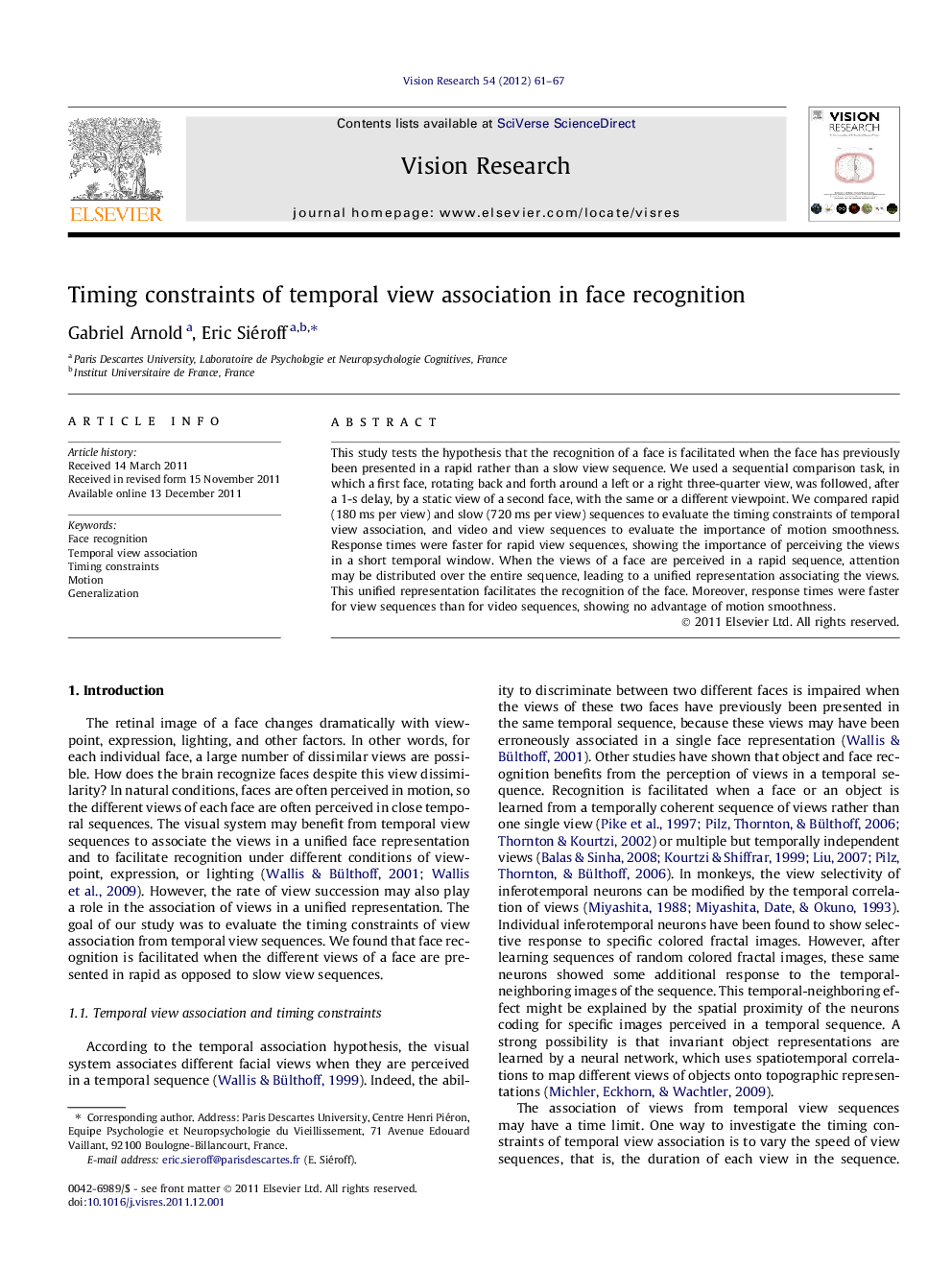| Article ID | Journal | Published Year | Pages | File Type |
|---|---|---|---|---|
| 6203735 | Vision Research | 2012 | 7 Pages |
This study tests the hypothesis that the recognition of a face is facilitated when the face has previously been presented in a rapid rather than a slow view sequence. We used a sequential comparison task, in which a first face, rotating back and forth around a left or a right three-quarter view, was followed, after a 1-s delay, by a static view of a second face, with the same or a different viewpoint. We compared rapid (180Â ms per view) and slow (720Â ms per view) sequences to evaluate the timing constraints of temporal view association, and video and view sequences to evaluate the importance of motion smoothness. Response times were faster for rapid view sequences, showing the importance of perceiving the views in a short temporal window. When the views of a face are perceived in a rapid sequence, attention may be distributed over the entire sequence, leading to a unified representation associating the views. This unified representation facilitates the recognition of the face. Moreover, response times were faster for view sequences than for video sequences, showing no advantage of motion smoothness.
⺠We used video and view sequences of faces rotating around the three-quarter view. ⺠The learning sequence was followed by a static test view with different viewpoints. ⺠Responses were faster for rapid than slow sequences, showing timing constraints. ⺠Fastest responses were found in rapid view sequences, against a motion advantage.
